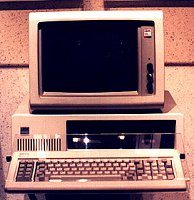
First
we must define what a personal computer is:
-It
must be digital
-It
must be mostly automatic
-It
must be accessible to the public as a kit, complete product or as plans
-It
must be small enough for the average person to move
-It
must be cheap enough for the average person to afford ($10,000 max.)
-It
must be simple enough for the average person to use with out special training.
With these requirements in mind let’s begin the history of the personal computer.

The Simon was the first personal computer, designed by Edmund Berkeley of Berkeley Enterprises. He published his plans for Simon in a series of Radio Electronics from 1950 to 1951.
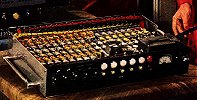
The GENIAC, designed by Edmund Berkeley of Berkeley Enterprises. It was very cheap, digital, small, and it was user programmable. Its output was a series of small lights. It could be programmed to play Tic-Tac-Toe, Nim, Monopoly, and to do calculations. There were also similar machines that were sold under several different names.
The EC-1 was a small, cheap desktop computer that was introduced in 1959, it could solve certain problems yet it is not a personal computer because it uses analog technology, not digital.

This small computer was based on the technology that powered the IBM Mark 1, but instead of the thousands of electromagnetic-relays used in the 8 foot high, 50 foot long Mark 1, this desktop machine had only 6 relays
The PDP-8 was one computer in a line of many PDP's, but this one was designed for the home market yet it's price kept it out of the market, plus the fact it needed racks of equipment to function correctly. Although the PDP-* may had not be a hit it's self it inspired Steven Gray, founder of the Amateur Computer Society to start his organization and to publish a newsletter about home computers. The publishing of the ACS Newsletter was the start of the hobbyist computer movement predicted by Edmund Berkeley of Berkeley Enterprises more than 20 years earlier.
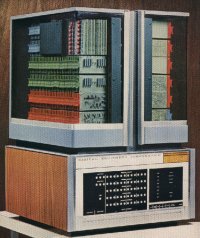
Honeywell took a stab at the computer market using this....., well very interesting computer for the kitchen, you could even cut veggies on it (yes, it did have a cutting board!). This computer served as the IMP's the powered ARPANET, an early form of the Internet (and no, they didn't have cutting boards, yet the technology was cutting edge......HAHAHAHAhahaha(ahem.).)

The "Paperclip Computer" actually came in a book "How To Build A Working Digital Computer" written by Alcosser, Phillips, and Wolk. The book tells you how to make a computer using household items i.e. paperclips. The commercial version was produced by a company named COMSPACE and was called the Arkay CT-650.
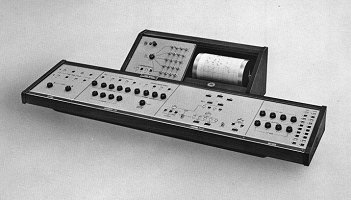
The Imlac PDS-1 was a personal computer/ workstation that was the first computer to use a GUI (Graphical User Interface). A GUI is a program that allows the user to manipulate digital data using abstract, non-exsistant representations of the programs or data, Windows is an example of a GUI. The Imlac PDS-1 was based on the PDP-8 and PDP-10. P.S. The PDP-10 also demonstrated that GUI that the PDS-1 used.
The Kenbak-1 was designed and sold by John Blankenbaker. The Kenbak-1 was sold through small ads in Scientific American in 1971.
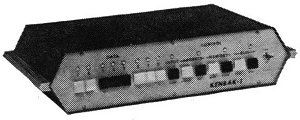
This small, little known computer was a very neat computer indeed. It had it's own display, keyboard, and even BASIC (a programming language) built in, but these computers were hardly known because they were marketed to engineers and scientists.
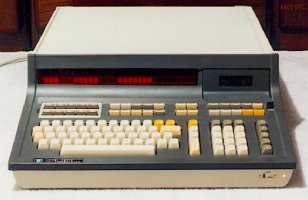
The Intel MCS-4 based SIM4 is billed as the first microcomputer, but not the first personal computer.

A French microcomputer that used the Intel 8008 chipset.
This computer could be said to be the most innovative computer ever. It had a GUI, a mouse, an object-oriented operating system, and fast networking. It had features that took 10, even 20 years to become common place. Oddly enough this gem of computer was never commercially produced but a later version the STAR was released with little success.
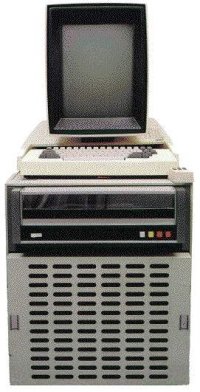
This personal computer was designed by Nat Wadsworth and available from the manufacturer as a kit or as a completed computer.
This computer, designed by Jon Titus, was the computer that made the computer hobbyist movement into a mainstream hobby.
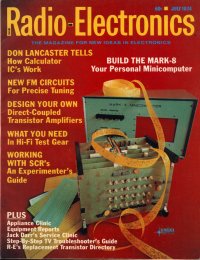
This computer is one of the most over hyped computers around. Many bill it as the first personal computers ever, yet as you can see it was obviously not the first. It did sell in high quantities and was the first computer to use Microsoft software but that doesn’t make it very special.
Unknown to many this computer was IBM’s true first entry into the personal computer market. But its high price kept out of the reach of most people. This was one of many of IBM’s failed attempts to enter into the personal computer markets.
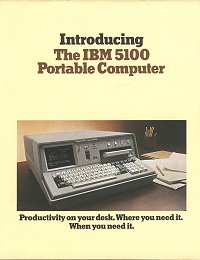
Technology: Mostek 6052/LSI (A pin by pin replacement of the Motorola 6800)
The Apple I and Apple II are very important computers in the history of personal computers. The Apple I was the original computer produced by Apple's Steve Woziank and Steve Jobs. These two computer hobbyists created a very succesful empire with the second version of the Apple I, the Apple II this computer was very important to the personal computer industry and to the history of personal computers because it brought personal computers from the garages and basements of computer "geeks" to the offices and desks of businesses and homes everywhere.
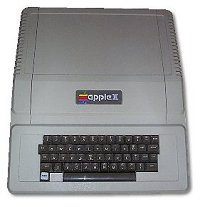
This was the big bang for the personal computer industry, transforming it from a small, hobbyist movement into the everyday item that has changed our lives forever. The PC might not have been IBM’s first personal computer but it was its greatest. The PC was very important because people who had never thought of buying a personal computer did.

The Apple Lisa was
a risky next generation project that was Steve Jobs' pet project. The Lisa
used the GUI system which was tested in systems like the Alto, and the
Imlac but it never had a commerical chance. Even though the Lisa was very
advanced it was plagued with problems. Apple had decied to not publish
a development kit for developers to create programs for the Lisa until
a year after release. The high price of the Lisa and development issues
doomed the Lisa from the start but Apple was ready.....
The Macintosh 128 looks like a Lisa that has been stood up on its side and shrunk. The Macintosh learned from all of the mistakes that the Lisa: It was cheaper ($2,495) and it had a large software library even before it was released ( developers made programs on Lisa II's for the Macintosh). This computer finally brought the GUI into the reach of the average joe and was probably the first personal computer in which you could pull it out of the box, plug it in, hook-up the keyboard, and began working. The Apple iMac is heading back towards the all-in-one appliance computer.
Blinkenlights
Archaeological Institute
www.blinkenlights.com
gIntel.com
www.intel.com
The History of Computers, Les Freed, 1995, Ziff-Davis Press, Emeryville, California.
Apple
History
www.apple-history.com